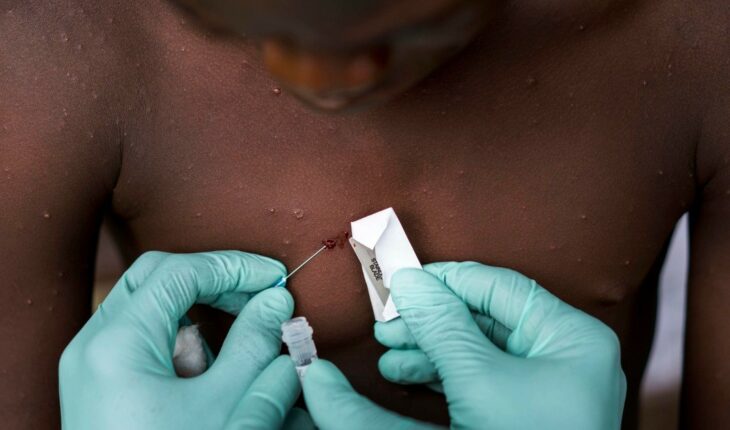The disease known as monkeypox, first detected in the ’70s on the African continent, is sounding some alarms after knowing its recent spread in various regions such as the United States, Canada and several countries in Europe.Although the outbreaks at the moment are contained, medical authorities point out that there is still not much information about these and their possible routes of transmission, so the World Health Organization (WHO) convened a meeting to investigate the reported cases.
Monkeypox is a rare viral zoonosis (disease caused by viruses transmitted from animals to people), which produces symptoms similar to those seen in smallpox patients in the past, although less severe. As detailed by the WHO in a statement this week, the main route of transmission is from wild animals to humans: by direct contact with blood, body fluids or lesions of the skin or mucous membranes of infected animals. Although it is called “monkeypox”, it is also transmitted by other primates, rodents and even marsupials. Moreover, it is believed that between people it is not a highly contagious disease (“To date it has not been possible to demonstrate that human-to-human transmission alone can sustain infection with the monkeypox virus in humans,” they wrote); although it can be transmitted by bodily fluids (mucous membranes, wounds, sexual fluids) or indirectly by contact with objects that have traces of these fluids, which include drops of saliva. The incubation period is 6 to 16 days – although it can vary between 5 and 21 days – and the infection can be divided into two periods: one of invasion (between days 0 and 5), characterized by fever, intense headache, lymphadenopathy (inflammation of the lymph nodes), low back pain, myalgia (muscle aches) and intense asthenia (lack of energy); and one of skin rash (between 1 and 3 days after the onset of fever), which usually affects the face first and then spreads to the rest of the body, forming a crust that then falls off. The infection usually goes away on its own (lasts between two and four weeks) and there are no specific treatments or vaccines against it, but outbreaks can be controlled. “In the past, the smallpox vaccine demonstrated 85% efficacy in preventing monkeypox. However, the vaccine is no longer accessible to the public, as its production was suspended following the global eradication of smallpox. However, prior smallpox vaccination can contribute to a milder progression of the disease,” the WHO describes.
Regarding its history, it was first discovered in apes in the 1950s and by 1970 had spread to humans, mainly in rural rainforest regions of the Congo Basin and West Africa. In 2003 cases of monkeypox were confirmed in the United States (the first time the disease was detected outside the African continent) and in 2017 Nigeria suffered the largest documented outbreak, approximately 40 years after the last confirmed cases on the continent. On the cases that were appearing now (those confirmed are close to a hundred), it was reported that the vast majority (in Spain, the United Kingdom and Portugal, for example) affect men who have had sex with other men in recent weeks, although they point out that it is too early to say if it became a sexually transmitted disease. At the moment, they maintain that the risk to the general public is very low and recommend that any disease that occurs during a trip or return from an endemic area be reported to health professionals, including also recent travel information and vaccination history.”





